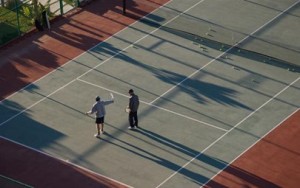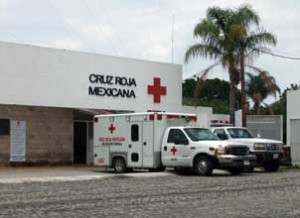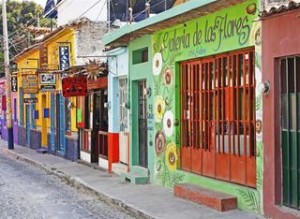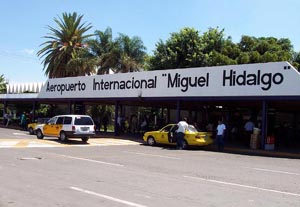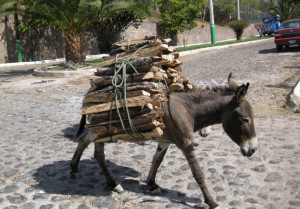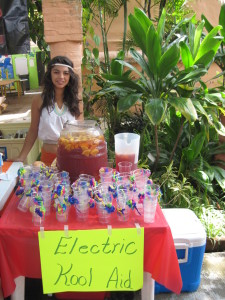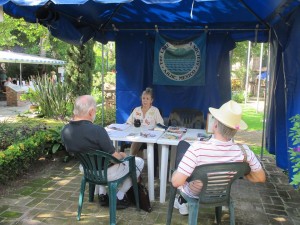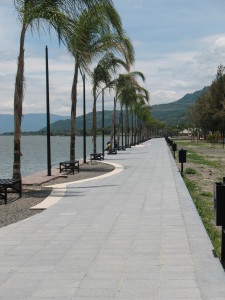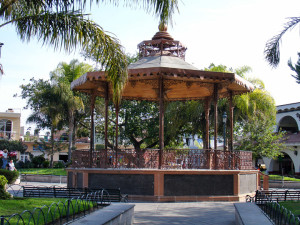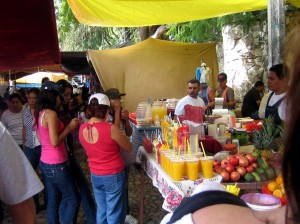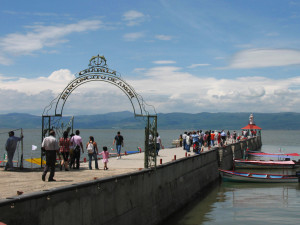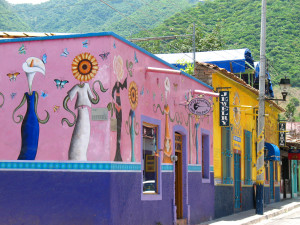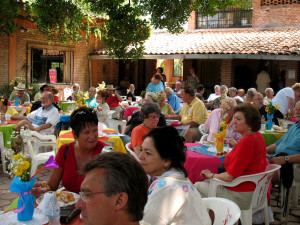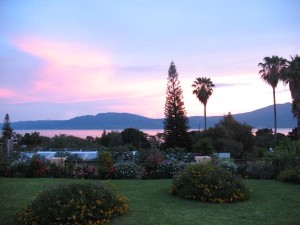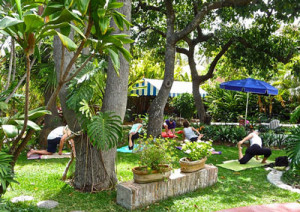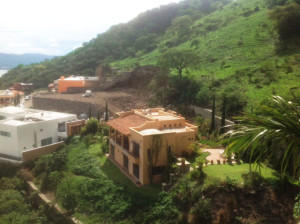
Lake Chapala is Mexico’s largest lake, covering 425 square miles and extending 50 miles from east to west. It is located a mile high in central Mexico, only an hour’s drive from Guadalajara and surrounded by several fishing villages and a few larger towns. The majority of expats live on the north shore in Chapala, Ajijic, Jocotepec or one of the many fishing villages nestled among them. The lake is surrounded by what are often referred to as broccoli mountains which turn emerald green in the rainy season.
Ajijic is probably the most popular and most photographed of the villages. With cobblestone streets that are shared by autos and horses alike. Cows, donkeys and goats graze nearby while Mexican vendors hawk their wares. Lakeside is full of color, music and a myriad of entertainment possibilities.
So, why are so many expats choosing to spend their retirement years in Mexico…and specifically the Lake Chapala area?
Because of its rich Spanish and indigenous cultural heritage, charming colonial towns, spectacular beaches, lower cost of living (primarily in housing and health care) and proximity to Canada and the United States, the country of Mexico is the number one foreign destination for North American retirees. The Mexican economy is in good shape, and over the last few decades, the Mexican government has invested a great deal of money in improving the country’s infrastructure, including airports, highways, hospitals, communication, and hotels, making it even more desirable to retire here.
Aaran Shatterly, editor-in-chief of Inside Mexico, estimates that 1.5 million Americans currently live in Mexico and predicts that as many as 10 million North Americans will move to Mexico over the next 30 years.
Depending on whom you talk to, you will likely get a different list of the most popular expat areas, but mine includes (alphabetically):
- Guadalajara, Jalisco
- Lake Chapala, Jalisco
- La Paz, Baja California
- Mazatlán, Sinaloa
- Mérida, Yucatán
- Morelia, Michoacán
- Puerto Vallarta, Jalisco
- San Cristóbal de las Casas, Chiapas
- San Miguel de Allende, Guanajuato
A quick Google search will provide hundreds of hours of pleasurable reading on all these popular destinations.
Because Lake Chapala has the largest expat community in the world, guesstimated to be about 15,000 full and part-time expats, and because I have lived in the Lakeside area for 18 years, I am focusing on Lake Chapala’s north shore.
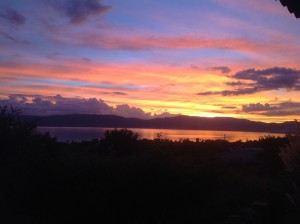
Lakeside is magical. In addition to its natural beauty, and weather, the culture is fabulous. Most visitors are swept up by its charms within the first three days of their arrival. When I moved here, it reminded me of living in California during the fifties. Mexican values are so different; it’s all about family—extended family first, religion next, friends follow and way down at the bottom of the list are things like possessions and positions. Think about how that compares to some of our values north of the border where family can be scattered worldwide and our first question upon meeting someone new is usually, “what do you do?”
In addition to values which place people above things, there is also a difference regarding time. Mexicans live in the “now.” That means treating each moment as the most important moment in your life—a great lesson for all of us to learn.
Many expats who stay first become acclimated and then addicted to this luxurious pace of life that provides enough time to enjoy the moment. Mexicans spend precious little time trying to control life. “It is what it is” — another great lesson.
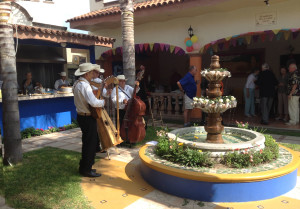
As you live and learn the ways of Mexico and its people, you become habituated to the slower pace, the rhythms, and tempo of life in the villages. You revel in the sounds of horses clippity-clopping down the cobblestone streets, donkeys braying, children laughing, and vendors calling out their wares and services as they pass by, always greeting everyone with a big smile and a warm-hearted buenos días!
And then, for most of us, it becomes about community—the new friends we have made and the support systems we have forged both within the expat community as well as with the Mexicans. Be forewarned though, this precious little corner of the Western world, as perfect as it may be for those of us who choose to live here full-time, is not for everyone. In the next post, I will discuss the pros and cons of choosing Lake Chapala as your new home.
